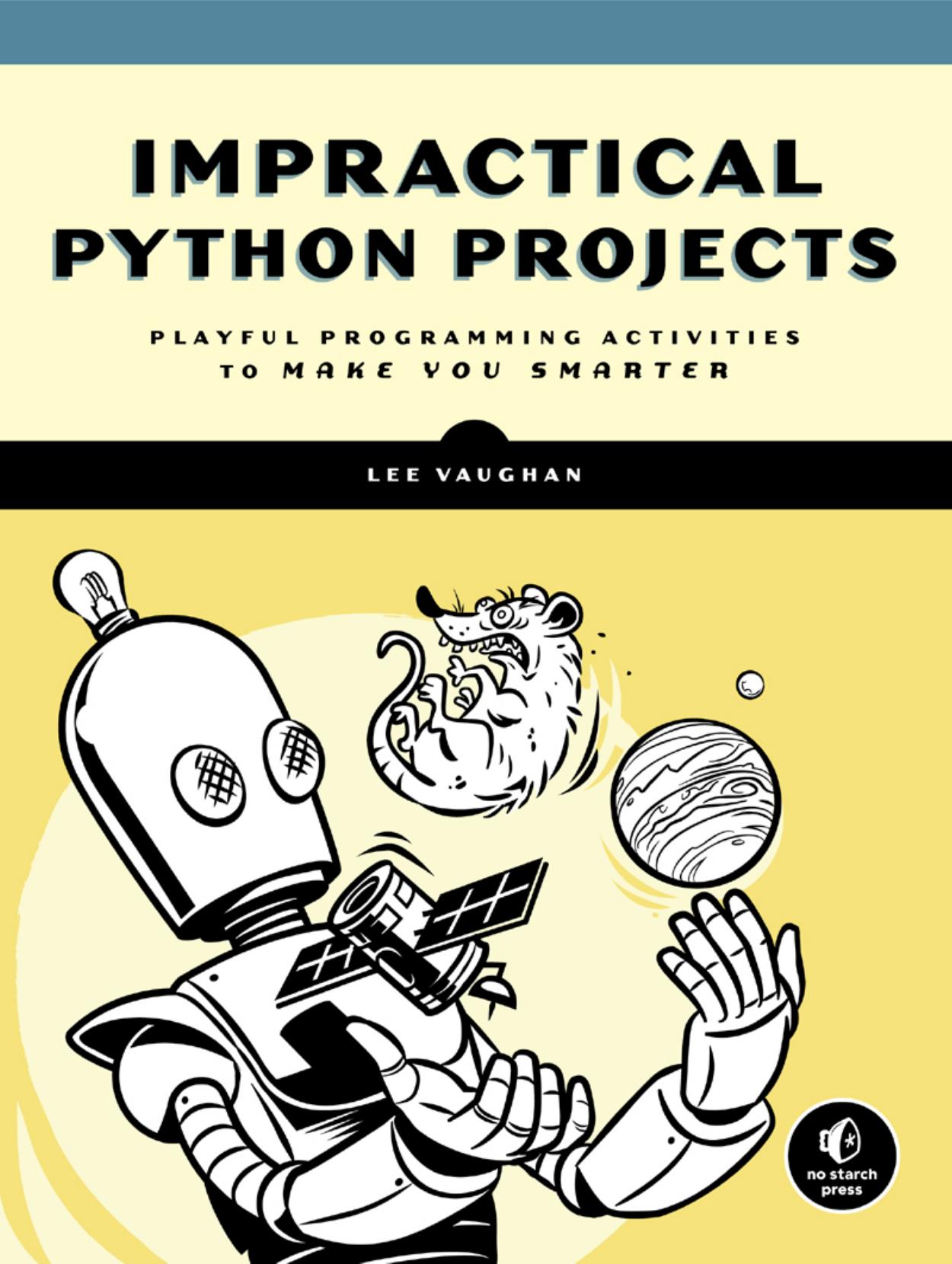Impractical Python Projects: Playful Programming Activities to Make You Smarter by Lee Vaughan

Author:Lee Vaughan
Language: eng
Format: mobi, epub, pdf
ISBN: 9781593278915
Publisher: No Starch Press, Inc.
Published: 2019-05-15T00:00:00+00:00
L
50 Ã 106
1 Ã 109
N
7.9 Ã 106
15.6 Ã 106
**midpoint of ranges shown
For input to your program, you can use the estimates in the table, those you find online, or those you calculate yourself (in the final column of the table).
Selecting Radio Bubble Dimensions
Radio waves that arenât focused into a beam for targeted transmission are incidental. Think of these as âplanet leakage.â Because we choose not to broadcast our presence to aliens who might come and eat us, almost all of our transmissions are incidental. These transmissions currently form an expanding sphere around Earth with a diameter of around 225 light-years (LY).
A 225 LY bubble sounds impressive, but it is the detectable size that really matters. A radio wave front is subject to the inverse square law, which means it continuously loses power density as it expands. Additional power loss can result from absorption or scattering. At some point, the signal becomes too weak to separate from background noise. Even with our best technologyâthe radio telescopes of the Breakthrough Listen programâwe could detect our own radio bubble only out to about 16 LY.
Since weâre really investigating why we havenât detected aliens, you should assume, for this project, that other civilizations have technology similar to our own. Another assumption should be that, like us, all aliens have a paranoid planetary consciousness and arenât broadcasting âhere we areâ signals that would announce their presence. Investigating incidental bubble sizes ranging from a little smaller than those currently detectable to those a little larger than our own transmissions should be a reasonable place to start. This would suggest a diameter range of 30 to 250 LY. Although we canât detect a 250 LY bubble, it will be interesting to see what the odds would be if we could.
Download
Impractical Python Projects: Playful Programming Activities to Make You Smarter by Lee Vaughan.epub
Impractical Python Projects: Playful Programming Activities to Make You Smarter by Lee Vaughan.pdf
This site does not store any files on its server. We only index and link to content provided by other sites. Please contact the content providers to delete copyright contents if any and email us, we'll remove relevant links or contents immediately.
| Coding Theory | Localization |
| Logic | Object-Oriented Design |
| Performance Optimization | Quality Control |
| Reengineering | Robohelp |
| Software Development | Software Reuse |
| Structured Design | Testing |
| Tools | UML |
The Mikado Method by Ola Ellnestam Daniel Brolund(20603)
Hello! Python by Anthony Briggs(19899)
Secrets of the JavaScript Ninja by John Resig Bear Bibeault(18208)
Dependency Injection in .NET by Mark Seemann(18108)
The Well-Grounded Java Developer by Benjamin J. Evans Martijn Verburg(17575)
OCA Java SE 8 Programmer I Certification Guide by Mala Gupta(17421)
Kotlin in Action by Dmitry Jemerov(17185)
Adobe Camera Raw For Digital Photographers Only by Rob Sheppard(16930)
Algorithms of the Intelligent Web by Haralambos Marmanis;Dmitry Babenko(16235)
Grails in Action by Glen Smith Peter Ledbrook(15390)
Test-Driven iOS Development with Swift 4 by Dominik Hauser(10393)
Becoming a Dynamics 365 Finance and Supply Chain Solution Architect by Brent Dawson(8055)
Microservices with Go by Alexander Shuiskov(7819)
Practical Design Patterns for Java Developers by Miroslav Wengner(7719)
Test Automation Engineering Handbook by Manikandan Sambamurthy(7671)
Angular Projects - Third Edition by Aristeidis Bampakos(7159)
The Art of Crafting User Stories by The Art of Crafting User Stories(6611)
NetSuite for Consultants - Second Edition by Peter Ries(6533)
Demystifying Cryptography with OpenSSL 3.0 by Alexei Khlebnikov(6305)
